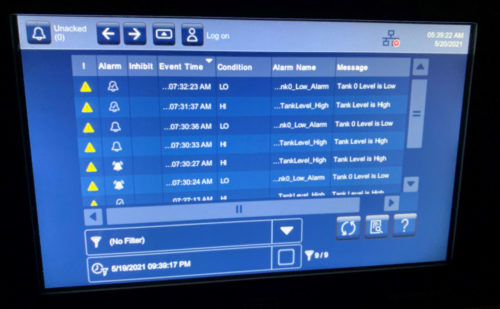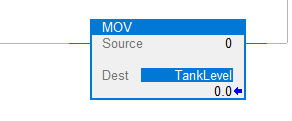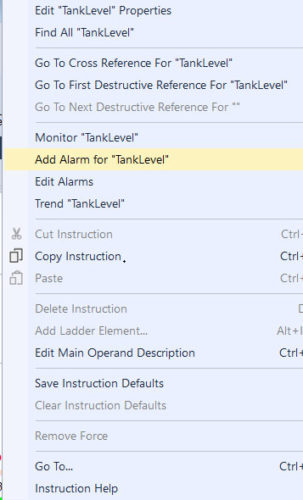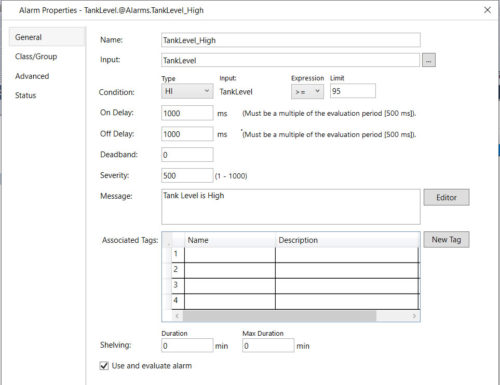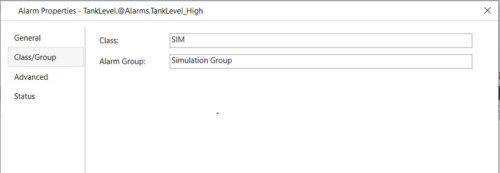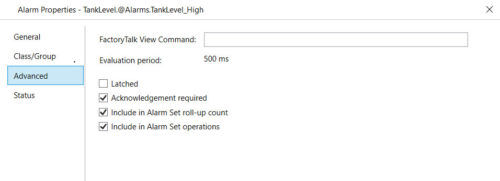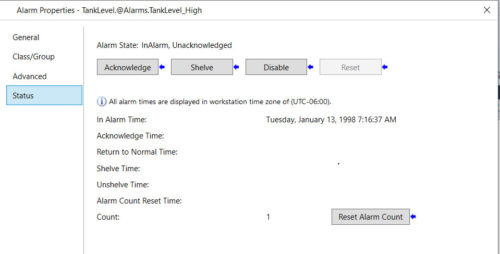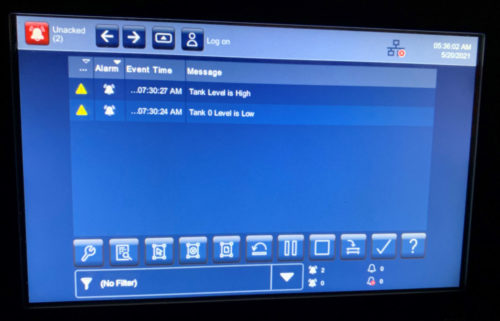
I will be honest, when I read the release notes for the latest release(s) of Logix Designer, I didn’t spend much effort on the parts about alarm enhancements with CompactLogix and ControlLogix Controllers.
But over the last couple of week I’ve come to learn about and appreciate some of these features.
There are two types of alarms that can be used today in View Designer projects, and in this article I’ll walk you through how I implemented and tested them using a Panelview 5510 and a CompactLogix 5380.
Instruction Based Alarms
Instructions based alarms are Logix instructions added to a Logix project in Studio 5000 Logix Designer.
With instruction based alarms, all of the alarm configuration is does in the Alarm Instruction itself, and the status of the alarm is published at runtime for clients like the PanelView 5000 terminals to subscribe to.
The instructions themselves come in two variants: The ALMD for Digital Alarms, and the ALMA for Analog alarms.
The result of adding these alarm instructions to a Controller which a PanelView 5000 is connected is that all of the instruction alarms become immediately available to be displayed on your PanelView 5000.
 The picture below shows the ALMD active in the Alarm Summary of the Panelveiw 5510 without any configuration in View Designer.
The picture below shows the ALMD active in the Alarm Summary of the Panelveiw 5510 without any configuration in View Designer.
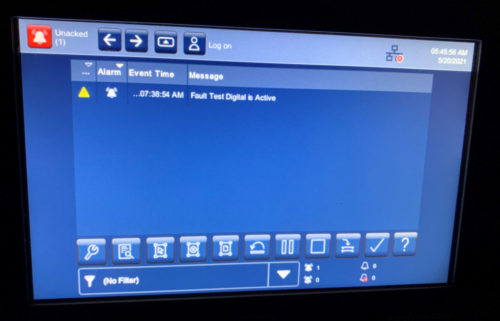 Editors note: Alarm Instructions originally appeared in RSLogix 5000 version 16 with support for the L55 and L6x controllers, but were not widely adopted because (1) they consumed substantial resources of controllers, and (2) initially only FactoryTalk ViewSE could subscribe to these alarms (see my ViewSE course for implementation details.)
Editors note: Alarm Instructions originally appeared in RSLogix 5000 version 16 with support for the L55 and L6x controllers, but were not widely adopted because (1) they consumed substantial resources of controllers, and (2) initially only FactoryTalk ViewSE could subscribe to these alarms (see my ViewSE course for implementation details.)
As far as View Designer, initially the only alarm system it supported were Logix Instruction-Based Alarms, and through v6 Rockwell still recommends no more that 1000 of these Alarms per PanelView 5000.

Tag Based Alarms
Tag based alarms are created from any tag in Logix Designer Database, and became available in Logix Designer Version 31 (and version 5.01 of View Designer – Ed.)
They can be used in CompactLogix 5380, 5480 Controllers (Not the 70 series,) as well as the ControlLogix 5580 Controllers (again not the 70 Series.)
Up to 4,000 Tag Based Alarms can be used in a View Designer Project, and when you add the alarm in your Logix Controller, it is immediately active in your Panelview 5000 HMI.
The main advantage of the new Tag Based Alarms are that they are not part of the logic program and therefore do not increase the controller’s scan time, unlike Instruction Based Alarms.
Editors note: In View Designer v6 Rockwell raised the Tag-Based Alarm limit to 16,000 for the PanelView 5510, however the 5310’s limit stayed at 4,000 – Ed.
Creating A Tag Based Alarm
Right-Click on the tag that you wish to add an alarm to and select “Add Alarm for <tag>”
On the general tab, I give the alarm a name, configure the conditions to generate the alarm, add messaging and there is an important check box at the bottom next to “Use and evaluate alarm” that needs to be checked to be active/used in your Panelview 5000 series project.
On the Class/Group Tab, you can add a class and group or area descriptions to help with Sorting and Filtering of like alarms in the Alarm Summary.
In the advanced tab, you may choose to “Latch” the alarm or run a Factory Talk View Command as well as other settings that are available.
Tag based alarms are in the Logix Designer Alarm Manager after created
PanelView 5510 At Runtime
The Alarm Summary displays the Tag-Based Alarms configured in Logix 5380, 5480, 5580 Controller without any configuration in View Designer:
Alarm History Example:
Conclusion
In years past I can remember building many HMI projects where you not only had to keep up with a tag database, but you also had to keep up with an alarm database as well.
How things have changed when you implement Logix based alarms. With the correct revisions and controllers and PanelView 5000 series, you can utilize low effort alarm creation with Tag-Based alarms.
My best to you in creating alarms in your Logix/View Designer Project.
Written by Brandon Cooper
Senior Controls Engineer and Freelance Writer
Have a question? Join our community of pros to take part in the discussion! You'll also find all of our automation courses at TheAutomationSchool.com.
Sponsor and Advertise: Get your product or service in front of our 75K followers while also supporting independent automation journalism by sponsoring or advertising with us! Learn more in our Media Guide here, or contact us using this form.
- Things I’ve Learned Travelling for Work (2) - July 17, 2025
- Things I’ve Learned Travelling for Work (1) - July 10, 2025
- Emulating an Allen-Bradley E3 or E3 Plus - June 30, 2025

Discover more from The Automation Blog
Subscribe to get the latest posts sent to your email.


